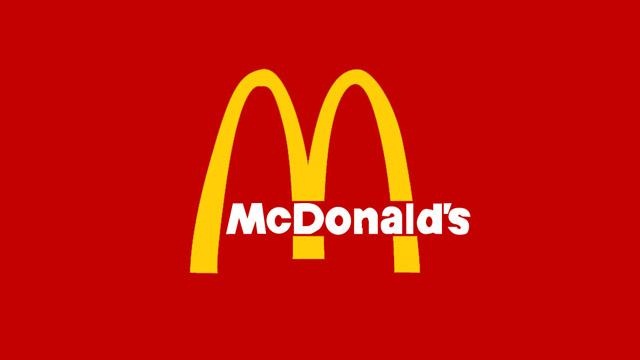
Will McDonald’s Create A Smoothie Meltdown?
August 24, 2010 3:34 pm Leave your thoughtsUh oh. McDonald’s may be repeating a history lesson that the company first taught in the mid-1990s when it stole the frozen yogurt market almost overnight. Now the giant chain has turned to beverages, and most recently, to smoothies. Consequently, it may be a rough future for smoothie franchises.
Not so long ago there were more than 6,000 smoothie outlets in the USA generating $2-billion in annual sales. Consumers created a thriving smoothie industry, and during a 5-year period market demand increased by 80%. No wonder so many people wanted to buy a smoothie franchise!
Smoothies on every corner
But suddenly it’s a different story. In July, McDonald’s increased the number of places where a consumer can buy a smoothie by 12,000 units – twice the existing number! Surely McDonald’s advertising will help expand that $2-billion market, but will it be enough to support 18,000 plus units? Or has the smoothie industry become over-saturated?
As the story continues to unfold, I can’t help but recall what happened when McDonald’s entered the frozen yogurt industry.
Starting in the 1980s, it seemed that everyone wanted to buy a frozen yogurt franchise. They were relatively inexpensive to open, and easy (and even fun) to operate. A dozen franchisors quickly emerged to build the industry as health-conscious Americans frequently chose frozen yogurt for their dessert of choice.
Frozen yogurt for a buck
I was fortunate to land the best of the frozen yogurt franchisors as a client (and served briefly as the head of marketing) and helped the company expand internationally. But the fun came to a sudden halt when McDonald’s, overnight, installed frozen yogurt machines in 10,000 stores!
Now, instead of paying $3 or more for a serving of quality frozen yogurt (in ICBIY’s case, the product was shipped frozen to every store – no powders, no mixes), consumers could buy a cone of frozen yogurt at McDonald’s for a buck.
Ouch!
Set aside the dispute about whether or not the McDonald’s product was really frozen yogurt. The mom and dad that used to take the kids to McDonald’s for dinner and then afterwards to ICBIY (or TCBY, or any number of other outlets) for dessert suddenly saw the opportunity to save a chunk of money. The kids seemed just as happy with McDonald’s frozen yogurt – even if it only came in vanilla, and without toppings – and mom and dad enjoyed the savings. So what if McDonald’s lowfat frozen yogurt wasn’t the real thing (with live, active cultures)? The consumer said it was good enough!
The end of the frozen yogurt franchise
And that’s when all the frozen yogurt franchises started cleaning their spigots for a final time. The market now belonged to McDonald’s.
Jim Amos, who served as president of ICBIY in the mid-1990s, remembers it as the “great yogurt meltdown.” After joining the company in the late 1980s to sell franchises domestically, Jim discovered a beckoning international market. It wasn’t long before ICBIY’s founders recognized his leadership skills and turned the company over to him and his capable leadership team. And during several years of dramatic growth, no one even thought about McDonald’s entering the scene. (Or maybe they did and preferred not to!)
“When McDonald’s began offering frozen yogurt,” Amos remembers, “the result was essentially commoditizing the product and dis-intermediating any system that was a higher priced destination based on the quality of their offering, such as I Can’t Believe It’s Yogurt.” Jim and cohorts predicted that consumers would not pass up a McDonald’s to go to a “destination” that sold a higher priced product for what was perceived to be essentially the same product. Not even if the destination sold its product in a variety of flavors!
“The result was almost immediate and it accelerated very quickly,” Amost recalls.
Most of the franchise networks would not survive – not only did their store sales decline, but they could no longer sell new franchises. Some, including ICBIY, were sold to private equity or synergistic buyers.
Will McDonald’s repeat history?
So is there a lesson here for smoothie franchises?
“There is little question that if McDonald’s wants to intermediate almost any segment they can do so based on the number of access points they have and the amount of marketing support and PR that can be levied,” says Amos, now CEO of Tasti D-Lite, which is expanding via franchising and sells “guilt free” frozen dairy desserts in more than a hundred flavors. “Further, the segment is already vulnerable as a single product purveyor and (smoothie companies are) adding line extensions to off-set same store sales declines.”
Time will tell if there will be the “great smoothie meltdown.” Meanwhile, customers seem to like McDonald’s newest line extension, even though it comes in only two flavors. Customer Darnell Richard told USA Today that he used to stop at a convenience store to quench his late-night thirsts, but now he buys smoothies at McDonald’s. “It’s a buck cheaper,” he said, “and it tastes better.”
And after all, consumers’ opinions – and 12,000 plus McDonald’s – ultimately make or break a market. As well as create meltdowns.
My personal opinion . . . I’m a frequent smoothie consumer who has rarely stopped at a McDonald’s in the last 25 years (since I had small children), but I’ve already enjoyed a half dozen McDonald’s Smoothies in the last month! My wife, too! I don’t like that they’re not made with real fruit (they’re made from a mix), but they’re better than good enough. And yeah, cheaper, too.
Categorised in: Buy a Franchise
This post was written by Dr. John Hayes
